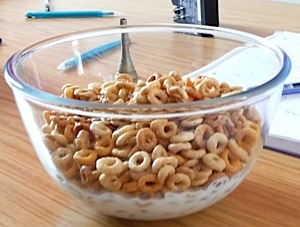Double or Add? Fun with Grandkids
Last day to get your FREE copy of Letters From Grandma: Before You Were Born for Amazon Kindle.
Double or Add? Fun with Grandkids
Large Numbers
There is a fable that the inventor of chess was rewarded by his king with whatever he wanted.
He asked that a grain of wheat (or rice, depending on which fable-tellers you listen to) be placed on the first of the 64 squares on the chessboard and every day after that the number of grains of wheat doubled until all 64 squares were filled. The king readily agreed.
After a week, the king’s accountant came to him and said, if you continue this path, we will be bankrupt. The king, however, honored his promise and the inventor became the new king. Had he continued to pay the inventor, on the 64th square, he would have needed 9 quintillion grains of wheat, or 9 million billions (2 to the power of 63 = 9,223,372,036,854,775,808). Someone figured out that if you laid that many grains of rice end-to-end, it would reach from earth to the nearest star, Alpha Centauri and back.
Is there another way to form this problem? Ask your grandchild to choose how they would want to be paid if you offered them $100 for a day of work and then $100 more each day for seven weeks, or one penny the first day of work, doubling the amount every day for the same seven weeks. Let’s see if there is an easy way to demonstrate the two choices.
Materials:
- 1 box of Cheerios or other cereal
- 1 box of Rice Krispies or other cereal
- 1 box of Kix or other cereal
- 1 box of Trix or other cereal
- 1 box of Cap’n Crunch or other cereal
- Optional: poker chips of different colors
- Pencil, pen or Magic Marker
- 2 sheets of poster board
Instructions:
- Draw a grid on each of two pieces of poster board that are 7 x 7, to make 49 squares, representing the number of days in seven weeks.
- Label the grids 1 through 49, for the number of days in 7 weeks.
- Title one grid – Add $100 a Day.
- Title the other grid – Double the Cents a Day
- Each one of the Cheerios is going to represent $100
- Each one of the Rice Krispies is going to represent one penny
- Have your grandchild pick the grid they want to be paid with
- Have them put one Cheerio on the first square of the $100 chart, representing $100
- Have them put one Rice Krispie on the first square of the Cents grid, representing one cent
- On the second square of the Cheerios chart, have them put 2 Cheerios, representing $200
- On the second square of the Rice Krispies chart, have them put 2 Rice Krispies, representing two cents
- On the third square of the Cheerios chart, have them put 3 Cheerios, representing $300
- On the third square of the Rice Krispies chart, have them put 4 Rice Krispies (double the square before), representing 4 cents
- Continue adding one Cheerio to each square
- Continue doubling the number of Rice Krispies on each square
- On the eighth day, the number of Rice Krispies will be 128. Start substituting one piece of Kix for each 100.
- On the eleventh day, the number of Rice Krispies will be 1,024. Start substituting one piece of Trix for one thousand.
- On the 15th day, the number of Rice Krispies will be 16,384. Start substituting one piece of Cap’n Crunch for 10,000.
What Should Happen?
On the 20th day, the value of Rice Krispies (524,228 = $5,242.28) will exceed the value of Cheerios on the 49th day ($4,900) On the 49th Cheerios chart square, you will have 49 pieces of Cheerios ($100 x 49 = $4900). On the 20th Rice Krispies chart square, you will have 52 pieces of Cap’n Crunch, 4 pieces of Trix, 2 pieces of Kix and 28 pieces of Rice Krispies (52 x 10,000 + 4 x 1000, + 2 x 100 + 28 = 524,228 cents or $5,242.28).
If your grandchild picked the doubling method instead of the adding method, their employer would be bankrupt by the 49th day.
Chess, anyone?
Why Is This Useful?
Anyone dealing with money, such as banks and stock markets, and anyone working with the distances between planets and stars deals with very large numbers. It may be helpful for them to know the difference between a trillion (a million million), a quadrillion (a thousand billion), a quintillion (a million billion) and a sextillion (a thousand trillion).
Have your grandchildren ever asked how many stars are in the sky? About 70 sextillion.
Thanks to drmikesmathgamesforkids.com for this activity.
Carol Covin, Granny-Guru
Author, “Who Gets to Name Grandma? The Wisdom of Mothers and Grandmothers”
http://newgrandmas.com
Don’t forget to follow Grandmother Diaries via Geek Girl on Facebook and Sign up for updates by email!. Sign up for updates by email!




Great activity for visual learners who need concrete details to make concepts come alive.
This is right up my alley. It would have been a great activity for me as a kid who happened to be a visual learner. 🙂
I have played with a few experiments similar to this growing up. Doubling a penny is one. The other was the time it takes to count to a million. For a person it could take the rest of our lives, but for a computer ( Commodore 64) it took about 12 hours.